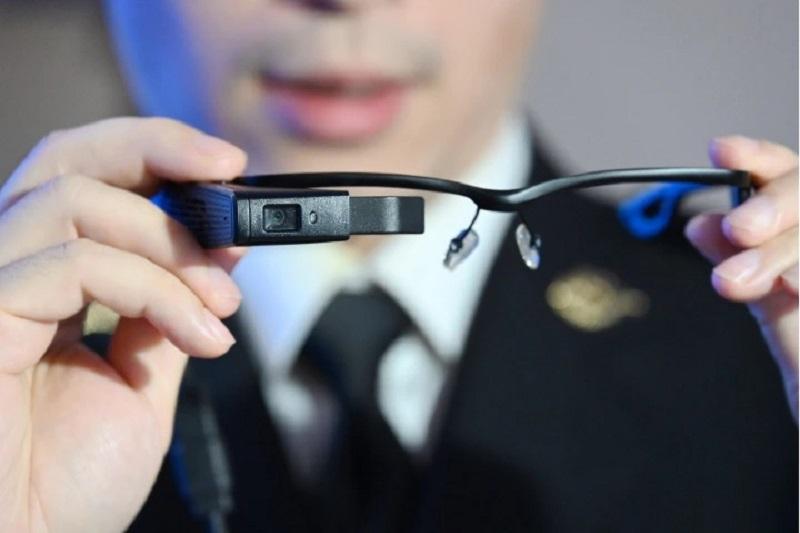In The Near Future, Augmented Reality Glasses Will Replace Smartphones
If We Look At The Evolution Of Technologies, We Can See That Alternate Realities Have Played An Important Role In The IT Industry, Especially Video Games.
From the use of virtual and augmented reality in education and movies to science fiction, these alternate realities have often helped humans perform everyday activities better and more efficiently.
However, these technologies are available to a limited part of society due to their high price. However, it seems that the situation will be different in the future.
Look at the efforts of the greats of the information technology world. You will realize that augmented reality and virtual reality technology will be widely used in people’s daily lives shortly. Experts believe that the market for AR and VR headsets will grow tenfold between 2021 and 2028.
The stunning developments of these two critical technologies and the gadgets produced based on these technologies have raised the hypothesis that virtual and augmented reality may replace smartphones, which are considered one of the essential components of life today.
Undoubtedly, the future of the Internet and how it affects people’s lives will not be in a smooth and predictable linear path. However, the extensive effort of large companies in creating virtual worlds and combining them with the daily life of humans shows that the way we interact with technologies and the surrounding environment will undergo fundamental changes.
So in the future, by looking at the screen of the devices we have, we will expect more than simple information, and we will have the desire for gadgets to provide us with analyzed information beyond reality. Technologies such as AR and VR will allow us to make the right decisions and make fewer mistakes by adding additional details to objective reality.
Why is augmented reality a better alternative to virtual reality for smartphones?
Both augmented reality and virtual reality indeed have a significant impact on the way we think. Still, virtual reality experiences are more pervasive and take us into a new realm. Such a situation can be exciting, but it makes us distant from the real world in the long run. Also, since virtual reality experiences completely blur the real world, long-term use will distract us entirely from the real world, just like the situation created by the Pokemon game a few years ago.
In contrast, augmented reality creates a bridge between the real world and a continuous virtual reality experience. As the name suggests, augmented reality only supplements our expertise in the natural world by using additional information that may not be readily available. This technology enriches our imagination without severing our connection with the natural world (Figure 1).
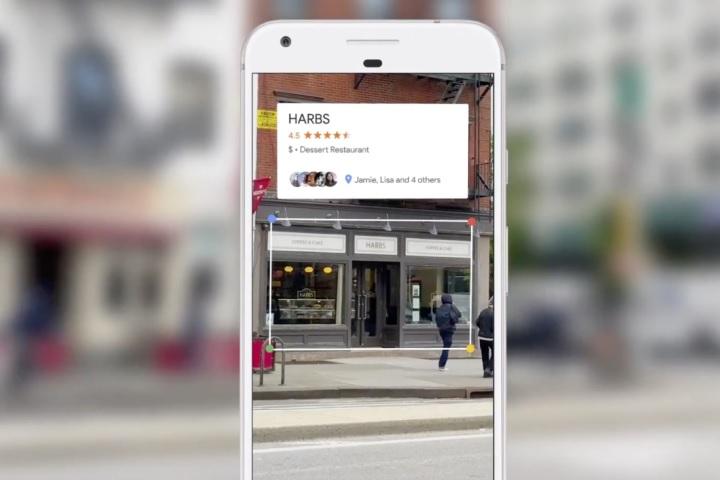
figure 1
Today, we can see our surroundings from a different angle with the help of our phones and tablets. For example, we can place the phone’s camera on food menus or street signs in other languages and translate the symbols and texts into our preferred language using programs like Google Lens. Also, we can get more information about buildings or streets around us with Google or Apple map services.
Although virtual reality can be just as fun, practical, and impactful as augmented reality, augmented reality technology seems to be a better substitute for smartphones. It is better to pay attention to the fundamental reasons we will mention below.
Ease of use
An augmented reality headset is lighter and easier to work with because it adds limited elements to the real world instead of taking you into a new virtual world (Figure 2). On the other hand, the resolution of the augmented reality headset display is not limited; when using it, it is possible to see the natural world in all its glory.
Since the augmented reality headset display must process fewer elements, it needs less processing power. It is even possible to use hardware equipment with less processing power than smartphones in augmented reality headsets. For this reason, most augmented reality headsets are available in regular glasses.
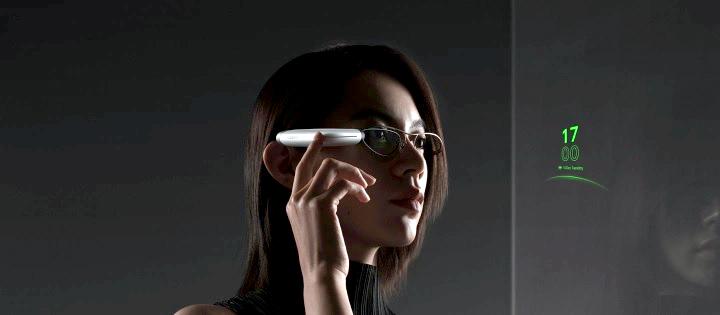
figure 2
Companies such as Oppo and Qualcomm describe augmented reality headsets as the continuation of smartphones and predict that in the future, increased reality headsets will quickly evolve and replace smartphones.
getting to know
A report published by the United States Vision Council shows that nearly 200 million people in this country use glasses to improve their vision. In contrast, the number of people with glasses worldwide is estimated to be more than 2 billion. This statistic shows that humans have a good relationship with drinks and have helped humanity greatly in the last few centuries (Figure 3).
People generally like to go for products that feel more familiar to them. This familiarity with glasses could potentially be an important driving force for adopting augmented reality glasses. While most virtual reality users, such as gamers or professionals, use it to experience new worlds or learn. On the other hand, the number of users of augmented reality devices in 2020 is reported to be almost 1.5 times the number of users of virtual reality products. This gap is expected to increase in the coming years.
One of the most important and expected uses of augmented reality, which has caused the use of augmented reality to be high even without special glasses, are the filters of social networking programs such as Snapchat, Instagram, and Tik Tok.
Due to approaching the future where the penetration rate of augmented reality will increase, it can be expected that the interaction of people with social networks will undergo fundamental changes, and augmented reality will become one of the essential components in this field.
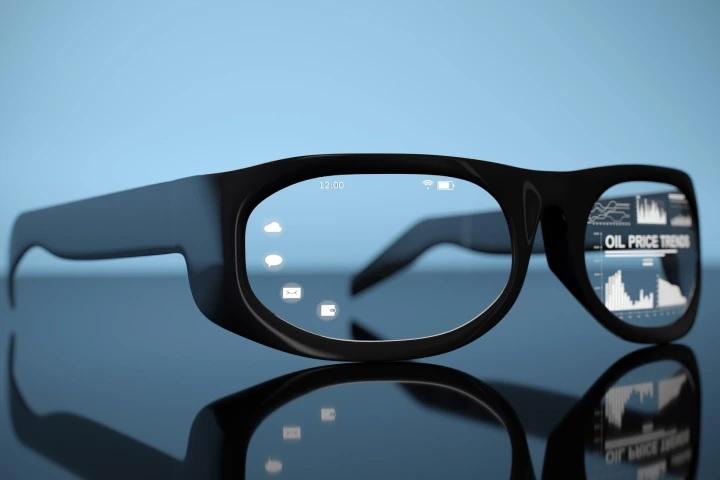
Figure 3
In such a situation, hearing people’s names in a social environment will be exciting because augmented reality glasses can remember people’s faces and remind you of them without others knowing what is happening in front of your eyes. It is one of the things that can help these products evolve and replace them with smartphones.
Learn more about the environment
The development of augmented and virtual reality technologies means that machine learning and artificial intelligence are experiencing significant improvements. Suppose that artificial intelligence does not reach self-awareness and does not include the world, but without a doubt, machine vision will make substantial progress shortly.
With these advances and taking advantage of the advantages of artificial intelligence, we can obtain more environmental data in an analyzed form through the lens of augmented reality glasses (Figure 4).
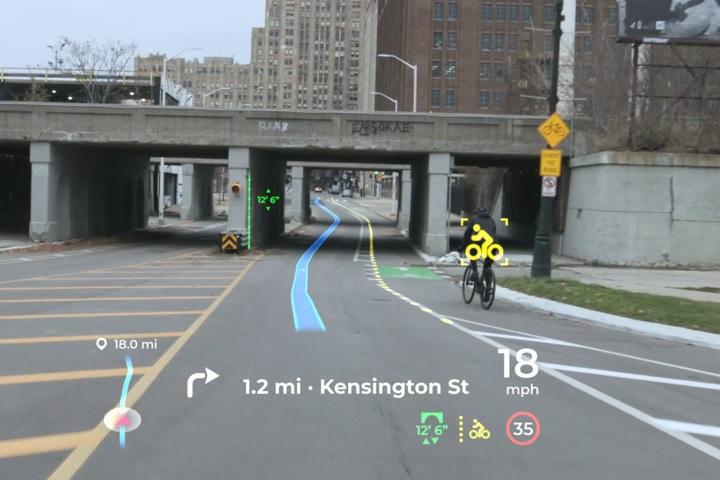
Figure 4
Machine vision and cloud computing can be widely available to companies at low cost to use them to make products. As Nvidia points out, machine vision, called video intelligence, is used to identify objects, faces, movements, facial expressions, and light streams. Imagine being able to look at the world like an Iron Man character. With the introduction of augmented reality glasses into everyday life, humans will gain extraordinary power that they would never have with smartphones.
The growing interest in big technologies in augmented reality
Evidence suggests that almost everything Apple touches turns to gold. Apple’s much-rumored augmented reality headsets will likely hit the market in late 2024. Still, the company’s interest in the technology will take the entire phone industry in a new direction. According to Apple analyst Ming-Chi Kuo, Apple plans to replace the iPhone with augmented reality glasses in the next ten years, which is big news and worth considering.
Companies smaller than Apple, such as Oppo, have developed prototypes of augmented reality glasses as a smartphone add-on. Experts believe that the augmented reality glasses of companies like Meta will enter the market much earlier than Apple’s augmented reality products.
Considering the highly successful virtual reality headsets of the Oculus series, we can expect this company’s augmented reality glasses to reach such a level of success in interacting with the virtual world.
It is true that Google’s glasses and Microsoft’s HoloLens are not widely available and have specific applications. Still, these companies’ expertise in computer vision allows them to combine augmented reality experiences with Android and Windows operating systems.
What are the concerns and challenges around augmented reality glasses?
Augmented reality will likely affect our personal and social lives, but the problems associated with smartphones may also be transferred to future technologies. Humans may face twice the conditions they meet with the widespread availability of smartphones. To be more precise, experience the stress, nervousness, and headaches of using a new technology again.
Classifying or selectively blocking some aspects of augmented reality is not far-fetched. For example, users in some countries may have access to more details than users in other countries or pay more for access to additional information. Also, it is not far from the expectation that we will see the launch of different augmented reality glasses, each of which has different prices.
Of course, engineers face essential challenges in the wide distribution of augmented reality glasses.
Calibrating augmented reality products to increase accuracy requires an extensive infrastructure of sensors and fast wireless networks.
The best solution to these problems is to build a pervasive machine-to-machine (M2M) network in which every machine or device will interact with every other device. Also, all physical objects, buildings, and natural elements of the world should be equipped with these sensors.
In this case, instead of sending information to the augmented reality glasses, each device must identify the surrounding objects, which is a complicated process. In addition, security and privacy concerns are other points that exist around augmented reality products.
Finally, eliminating biases in AI is one of the biggest challenges facing engineers and practitioners. Unlike humans, computers do not recognize emotions, or to be more precise; they do not experience a feeling.
Google will soon start field testing its augmented reality glasses.
At the I/O 2022 conference held in May, Google announced that it has started working on augmented reality glasses twice based on the experiences it has gained from the past and is now ready to test its new product in the real world. “Real-world testing allows us to understand better how these devices work in people’s everyday lives,” Justin Payne, product manager for Google’s augmented and virtual reality division, said in a post.
Also, the tests help evaluate factors like weather conditions and busy intersections when developing experiences like augmented reality navigation. An approach that is difficult and sometimes impossible to reproduce in laboratory environments fully. The initial testing of the next generation of Google-increased reality glasses will be limited to a few company employees and reliable testers.
The Inkjet website has written about this; the initial models of this product are equipped with a camera, microphone, and display inside the lens. Google evaluates the audio and visual sense for translation, transcription, and navigation applications.
However, the features of these glasses are limited.
The glasses won’t take photos or videos, but Google will use image data to translate text and display directions in navigation. Google has said that after completing the experiences and technical evaluation of the glasses, the data will be deleted unless needed to fix the defects and analyze them. However, information about faces and license plates is removed.
In addition, it will delete image data used for research purposes after 30 days.
The first generation of Google’s augmented reality glasses was not well received, but it seems that the new model has something to say. These glasses are an enterprise product at the current stage, and Google plans to fix the existing problems by releasing the next generation. For this reason, the development process of these glasses will not be fast. In any case, we have to wait and see if Google’s augmented reality glasses can become a worthy replacement for smartphones.
Justin Payne has pointed out that the project is currently in the early days of development, but the date of the wide release of these glasses is not yet known.
